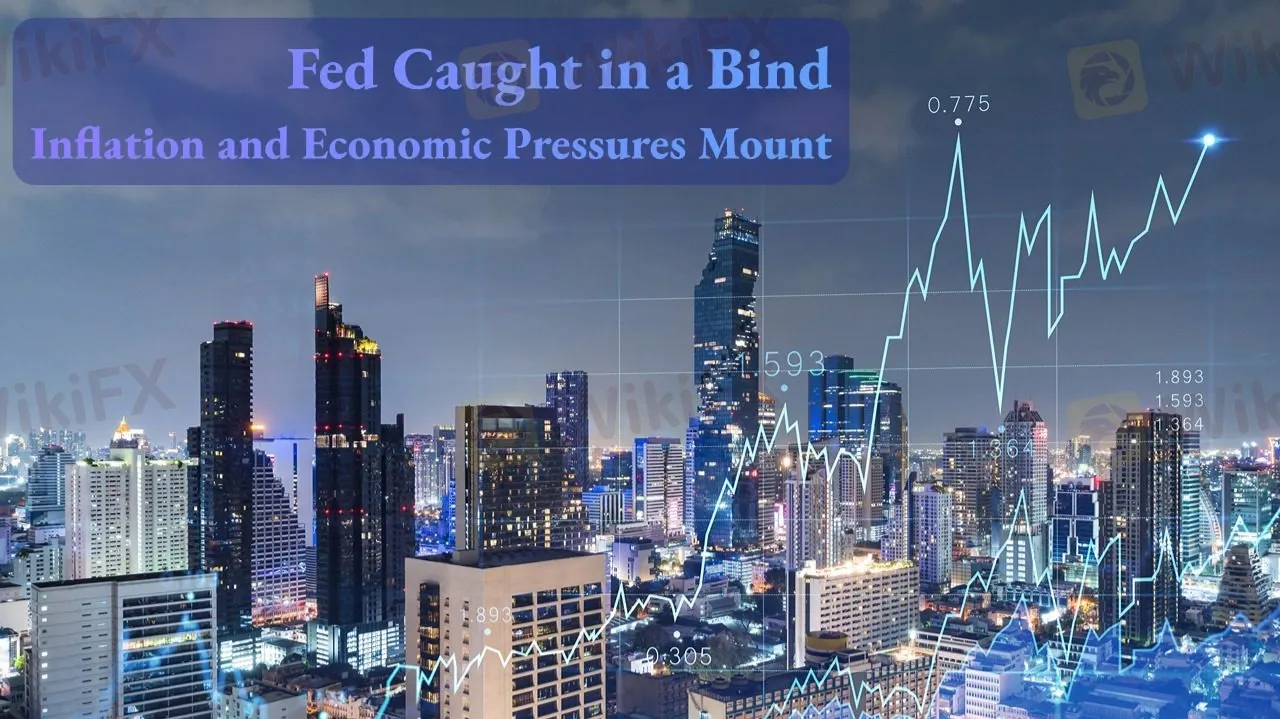Fed Caught in a Bind: Inflation and Economic Pressures Mount
Abstract:Stubborn inflation and slowing growth leave the Fed stuck between a rock and a hard place, with limited room to maneuver.

The U.S. economy appears to be drifting into stagflation territory—persistent inflation combined with slowing growth. Although official metrics like core PCE show inflation leveling off, market-based and survey-based expectations are creeping up. The University of Michigan's latest survey shows 5-year inflation expectations climbing to the highest level since 2023, a worrying sign for policymakers.
Economic momentum is also losing steam. Consumer spending is showing signs of fatigue, the housing recovery has plateaued, and manufacturing remains in contraction. Businesses are hesitant to invest amid high borrowing costs and persistent wage pressures. Externally, geopolitical frictions—particularly U.S.-China trade tensions—have increased supply chain uncertainties, keeping input prices elevated and inflation sticky.
Fed Chair Jerome Powell acknowledged this twin challenge in his latest remarks, stressing that the central bank is now facing a “two-sided risk.” On one hand, inflation has not come down as quickly as hoped. On the other, growth is clearly slowing, and labor market resilience is beginning to fray. If both inflation and unemployment rise in tandem, the Feds dual mandate—price stability and full employment—will come into direct conflict.
Making matters worse, the U.S. fiscal picture is deteriorating. Though the immediate threat of default has passed, rising debt levels and mounting interest payments limit the government's ability to support growth through stimulus. Powell renewed his warning about unsustainable deficits, urging Congress to take proactive steps to restore fiscal discipline.
In terms of policy, the Fed has adopted a wait-and-see posture. While markets had priced in rate cuts for 2024, Powell continues to signal that rates will remain “higher for longer” until inflation shows clear signs of subsiding. He also dismissed speculation of a “Fed Put,” indicating that the central bank would not intervene in equity markets and would instead stay focused on the real economy.
In sum, the Fed is navigating a highly uncertain environment. Its next moves will hinge heavily on incoming data—especially inflation and labor reports. Should the economy weaken faster than expected, the Fed may be forced to ease earlier than planned, even if inflation remains above target. For now, Powell is walking a tightrope, balancing competing risks with limited room to maneuver.

Read more

Broker Comparsion: FXTM vs AvaTrade
FXTM and AvaTrade are two well-established online brokers offering forex and CFD trading across global markets. Both enjoy strong reputations and high ratings on WikiFX—FXTM holds an AAA overall rating, while AvaTrade scores 9.49/10, indicating they’re regarded as reliable choices by the community. However, since brokers have great reputation in the industry, how do we know which one is more suitable for individuals to invest in? Today's article is about the comparison between FXTM and AvaTrade.

Pi Network: Scam Allegations Spark Heated Debate
A whistleblower report has surfaced, casting doubt on the legitimacy of Pi Network, alleging psychological manipulation, opaque operations, and potential financial exploitation. What is your take on this?

Webull Listed on Nasdaq Following SPAC Merger with SK Growth
Webull and SK Growth complete their business combination, with Webull now trading under the ticker “BULL.” App hits 50 million downloads worldwide.

UN Warns Asian Scam Operations are Spreading Worldwide
UN report reveals Asian scam operations expanding globally, targeting Africa, Latin America with cyberfraud, generating billions amid crackdowns.
WikiFX Broker
Latest News
Love, Investment & Lies: Online Date Turned into a RM103,000 Scam
Broker Took 10% of User's Profits – New Way to Swindle You? Beware!
Pi Network: Scam Allegations Spark Heated Debate
Broker Comparsion: FXTM vs AvaTrade
Account Deleted, Funds Gone: A New Broker Tactic to Beware Of?
Broker’s Promise Turns to Loss – Funds Disappear, No Compensation!
StoneX Subsidiary, Gain Global Markets Bermuda, Penalized for Trading Misconduct
El Salvador and U.S. Launch Cross-Border Crypto Regulatory Sandbox
The Instagram Promise That Stole RM33,000
Coinbase Launches Bitcoin Yield Fund for Institutional Investors
Rate Calc
